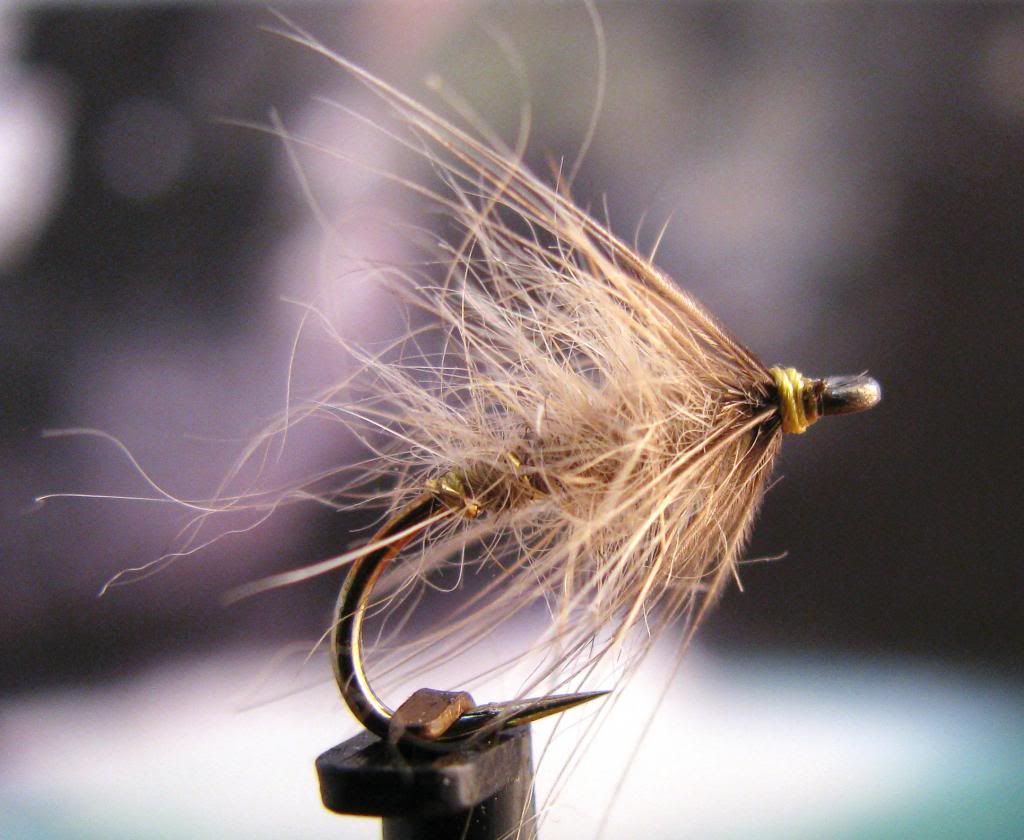John Shaner, using some exceptional resources and materials at his disposal, along with a skill for reproducing historic patterns that rivals anything I've seen, has put together a set of the Six Orphaned Nymphs using the correct hooks, sizes and materials. Again, these require some degree of interpretation, but if you could see his reference library...you'd appreciate the advantage he has in imagining what these nymphs were like. Thanks, John.
1: March Brown Nymph:
Hook: 13
Silk: Orange
Hackle: A short-fibered, light brown feather from the Hungarian partridge.
Tail: Three Fibers from a cock pheasant tail feather tied very short
Rib: Gold or silver wire
Body: Three reddish fibers from a center feather of a cock pheasant's tail.
(As with peacock's herl, tie in, twist with thread and wind up body, twisting together as you go.)
Thorax: Hare's ear fur dubbed fairly heavily.
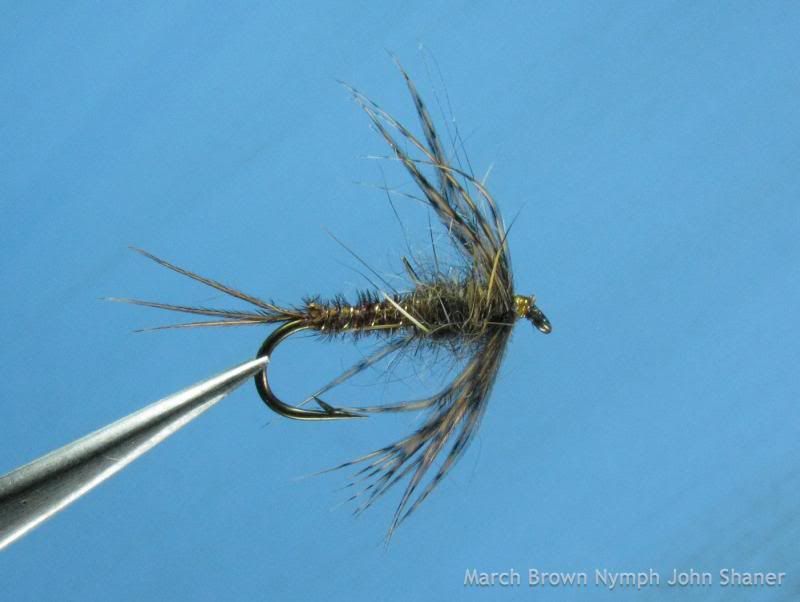 2. Half Stone Nymph
2. Half Stone Nymph
Hook: 13,14
Silk: Primrose yellow
Hackle: Very short blue dun hen's hackle, 2 turns or 3 turns at the most
Tail: none
Rib: Very fine gold or silver wire
Body: Primrose yellow buttonhole twist
Thorax: Mole's fur dubbed fairly heavily
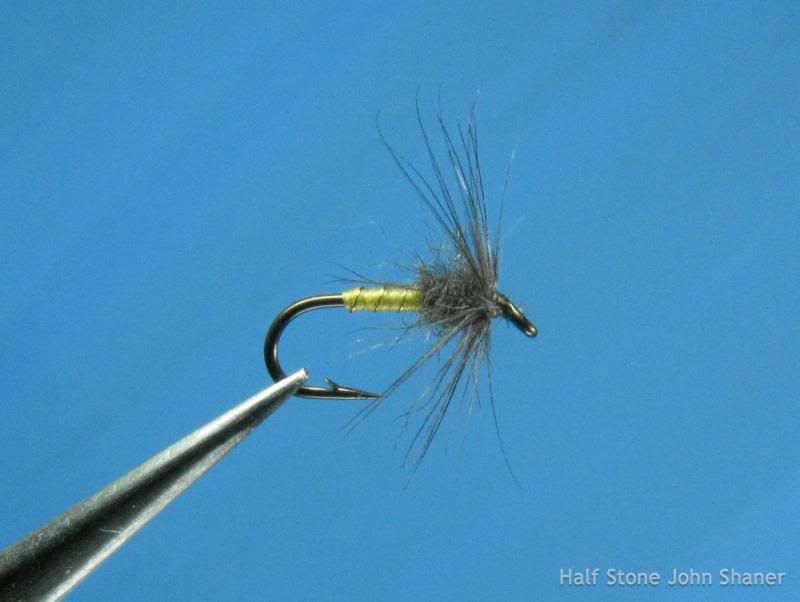 3. A Dark Olive Nymph
3. A Dark Olive Nymph
Hook: 14,15
Silk: Primrose Yellow
Hackle: One or not more than two turns of the tiniest blue dun hen's hackle.
Tail: Two or three very short, soft blue dun cock fibers
Rib: Fine gold wire
Body: Dark green-olive seal's fur mixed with a little dark-brown bear's fur (found next to skin)
Spun lightly at the tail and quite heavily at the shoulder and thorax.
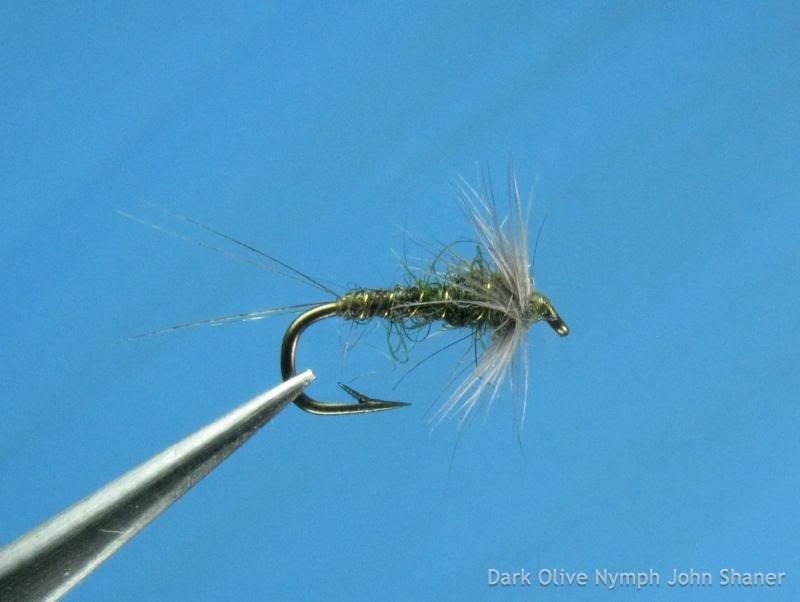 4: Pale Watery Nymph
4: Pale Watery Nymph
Hook: 15,16
Silk: Primrose Yellow
Hackle: One or not more than two turns of a darkish-blue cockerel hackle only long enough to suggest wing cases.
Tail: none
Rib: Fine gold wire half-way up the body
Body: Cream colored fur (Chinese mole or Australian opossum)
dubbed very thinly at the tail and heavily at the shoulder or thorax
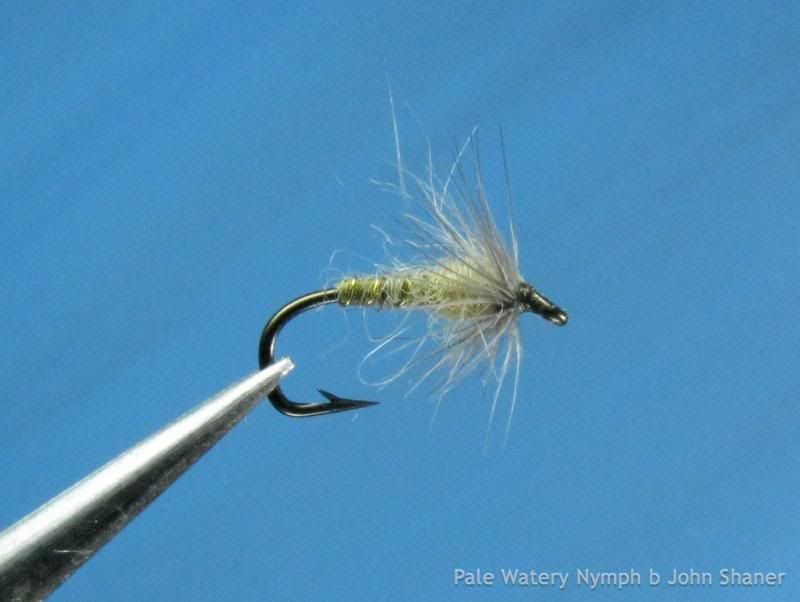 5. Pale Watery Nymph 2
5. Pale Watery Nymph 2
Hook: 15,16
Silk: White, waxed with colorless wax
Hackle: One turn of a very short honey dun cock hackle.
Tail: Three strands of very short, soft-blue dun cock fibers
Rib: None
Body: Undyed seal fur or pale buff Australian opossum fur
dubbed lightly at the tail and thicker at the thorax.
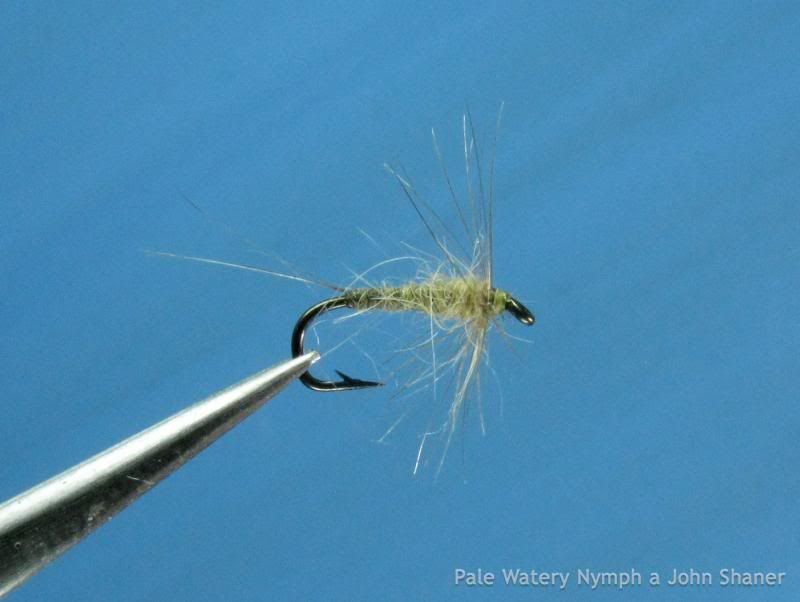 6. July Dun Nymph
6. July Dun Nymph
Hook: 15,16
Silk: Orange waxed with colorless wax
Hackle: One turn of a very short, soft rusty-dun cock hackle
Tail: Three fibers of a ginger hen's hackle tied very short.
Rib: Fine gold wire halfway up the body
Body: Darkish-brown-olive seal fur
Thorax: Medium-dun mole fur
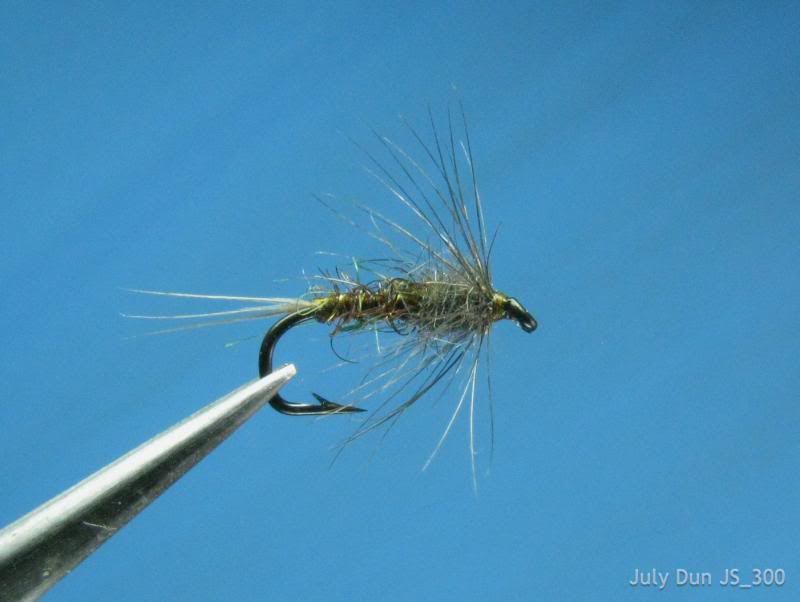
Regrettably, my pics are falling short in the past couple months and I'm going to have to reshoot these in the near future. This will have to do. My apologies.
And thanks to everyone who is making the exploration of these mystery flies such a fun exercise. There are so many talented people in this group and the flies I've seen so far are exceptional.



